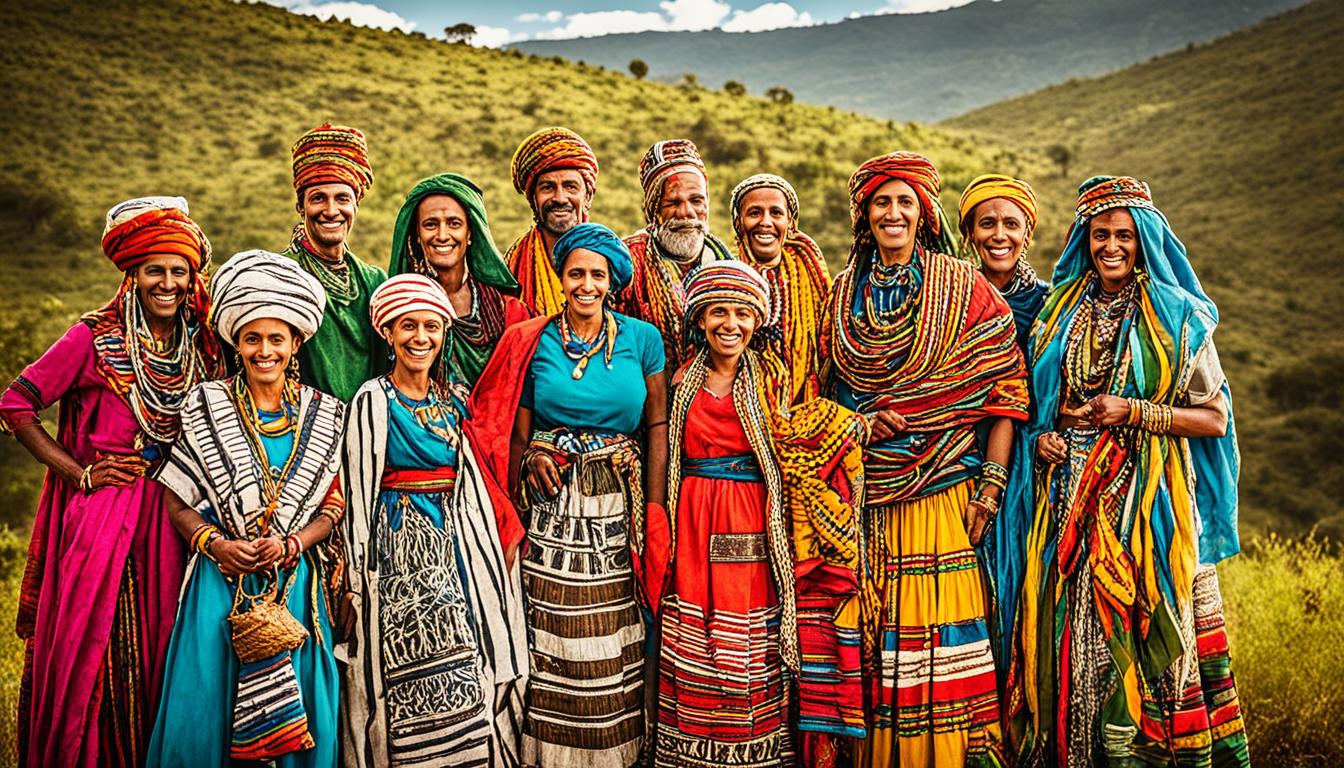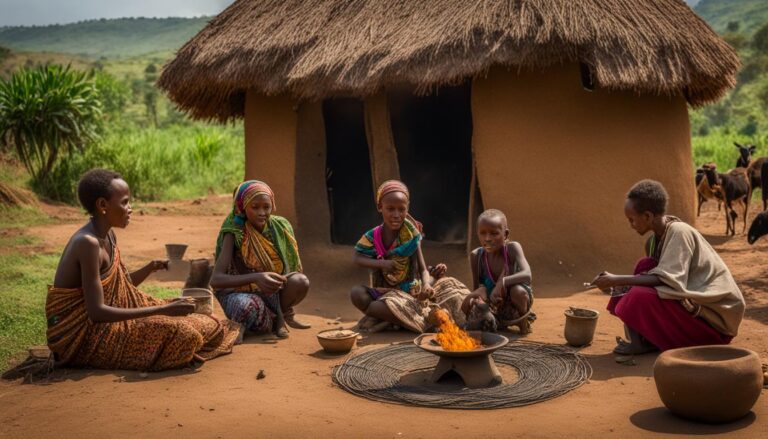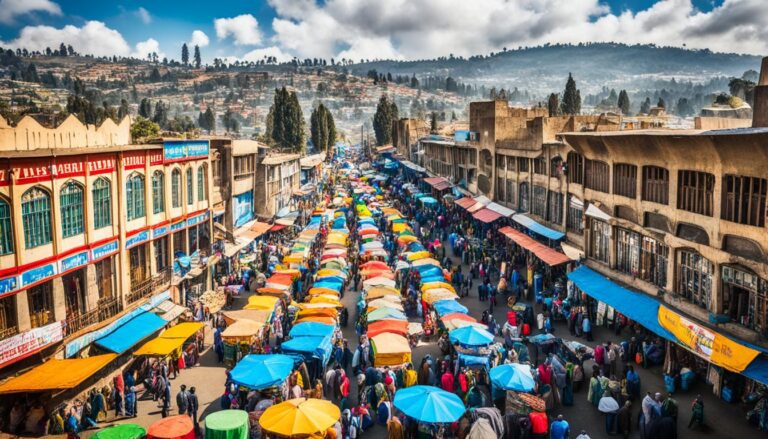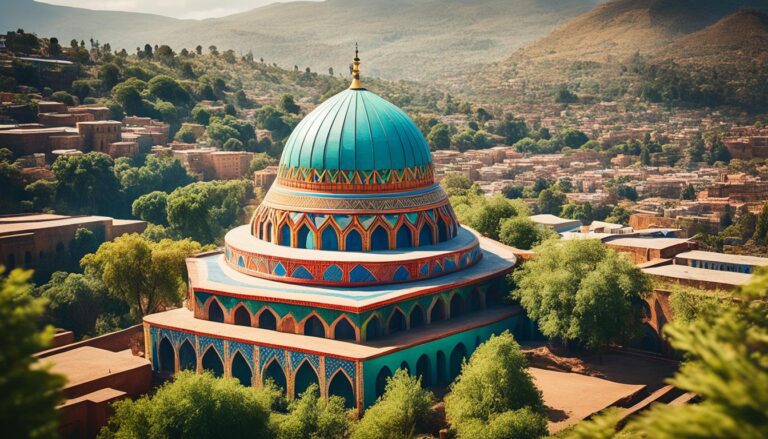How Many Ethnic Groups in Ethiopia?
Prepare to be amazed by the incredible ethnic diversity found in Ethiopia. You may not realize it, but this East African country is home to over 80 officially recognized ethnic groups, each with its own unique language, culture, and traditions. This astonishing statistic showcases the rich tapestry of Ethiopian society and the vibrant melting pot of identities that exist within its borders.
Key Takeaways:
- Ethiopia boasts over 80 officially recognized ethnic groups.
- The largest ethnic groups in Ethiopia include the Oromos, Amharas, Somalis, and Tigrayans.
- Afro-Asiatic and Omotic-speaking ethnic groups contribute significantly to Ethiopia’s cultural diversity.
- Nilo-Saharan-speaking Nilotic ethnic groups are present in the southwestern regions of Ethiopia.
- Ethnic groups in Southern Ethiopia, such as the Gurage, Sidama, and Wolaita, add to the country’s diverse fabric.
Join us as we explore the ethnic wonders of this remarkable nation, unveiling the captivating stories and traditions that shape the identity of Ethiopia and its people.
Afro-Asiatic and Omotic Ethnic Groups in Ethiopia
The ethnic makeup of Ethiopia is incredibly diverse, with numerous Afro-Asiatic and Omotic ethnic groups contributing to the cultural tapestry of the country. The majority of Ethiopians speak Afro-Asiatic languages, which are further categorized into two branches: Cushitic and Semitic.
The Cushitic branch includes prominent ethnic groups such as the Oromo and Somali, who have their own distinct languages and cultural practices. The Oromo people are the largest ethnic group in Ethiopia, accounting for 35% of the population, while the Somali people make up 10.2% of the population. (Source: Ethiopian National Census, 2007)
The Semitic branch, on the other hand, is represented by the Amhara and Tigrayans. These ethnic groups have their own languages, Amharic and Tigrinya, respectively, and have played a significant role in Ethiopian history and culture. The Amhara people constitute approximately 24% of the population, and the Tigrayans make up 6.1%. (Source: Ethiopian National Census, 2007)
Besides the Cushitic and Semitic branches, Ethiopia is also home to Omotic ethnic groups who speak languages belonging to the Omotic branch of the Afro-Asiatic family. These ethnic groups, such as the Welayta and Gamo, contribute to the linguistic and cultural diversity of the country.
Here is a breakdown of the major Afro-Asiatic and Omotic ethnic groups in Ethiopia:
| Ethnic Group | Language Branch |
|---|---|
| Oromo | Cushitic |
| Somali | Cushitic |
| Amhara | Semitic |
| Tigrayans | Semitic |
| Welayta | Omotic |
| Gamo | Omotic |
The presence of these Afro-Asiatic and Omotic ethnic groups enriches Ethiopian culture and showcases the country’s vibrant diversity. Through their languages, traditions, and customs, these groups contribute to an intricate and unique cultural mosaic.
Nilotic Ethnic Groups in Ethiopia
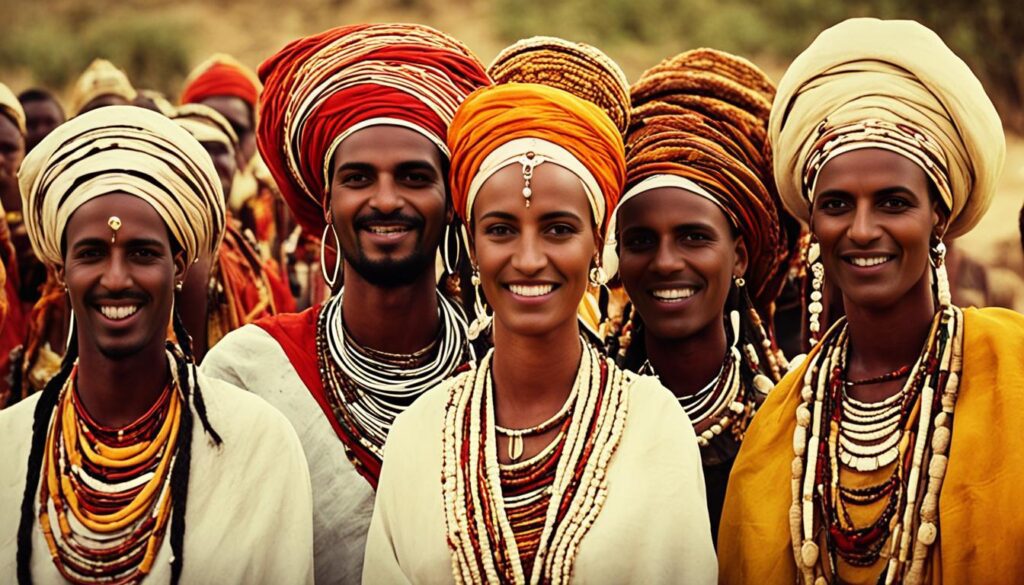
In the southwestern regions of Ethiopia, particularly in the Gambela Region, we find the presence of Nilo-Saharan-speaking Nilotic ethnic groups. These communities contribute to the diversity of Ethiopia’s ethnic makeup with their unique languages and cultural practices. Two notable Nilotic ethnic groups found in Ethiopia are the Nuer and Anuak. It’s interesting to note that these groups are also present in South Sudan, which shares a border with the Gambela Region.
“The Nuer and Anuak ethnic groups add a distinct flavor to the cultural tapestry of Ethiopia, enriching the nation’s traditions with their vibrant languages and customs.” – Ethiopian Cultural Expert
The Nilo-Saharan-speaking Nilotic ethnic groups in Ethiopia showcase the intricate connections between different African regions, highlighting the cultural exchange and diversity that defines the continent. By celebrating the heritage of ethnic groups like the Nuer and Anuak, we can continue to appreciate the unique contributions they make to Ethiopian society.
Nilotic Ethnic Groups in Ethiopia
| Ethnic Group | Language | Region |
|---|---|---|
| Nuer | Nuer language | Gambela Region, South Sudan |
| Anuak | Anuak language | Gambela Region, South Sudan |
Ethnic Groups in Southern Ethiopia
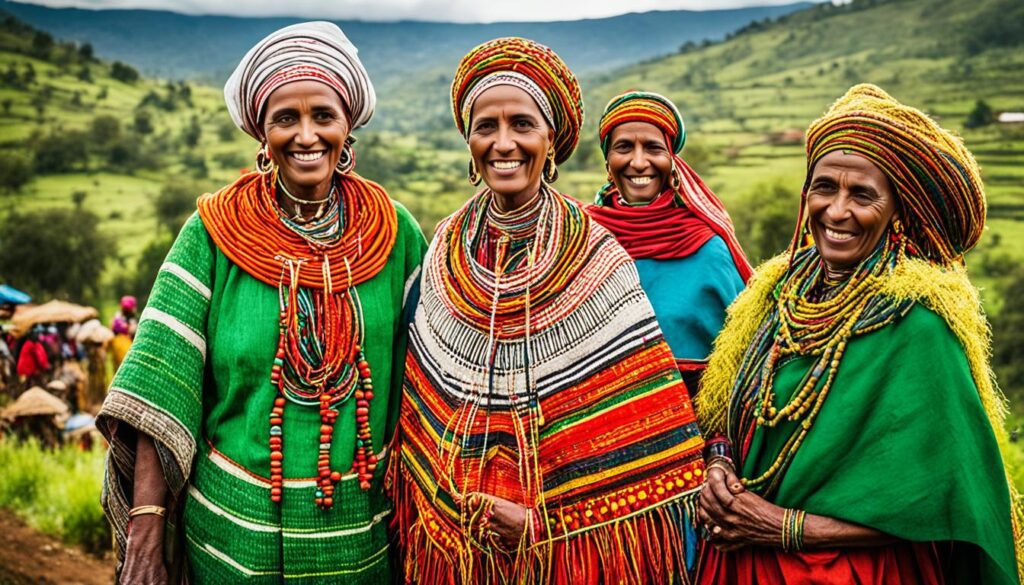
In the Southern Nations, Nationalities and Peoples’ Region of Ethiopia, we find a diverse array of ethnic groups that contribute to the rich cultural tapestry of the country. These groups have their own languages, traditions, and customs that make them unique and fascinating.
- The Gurage ethnic group is one of the prominent communities in this region. They have a distinct language and are known for their agricultural practices, particularly the cultivation of Enset, often referred to as the “false banana.”
- The Sidama people, another significant ethnic group, have their own language called Sidamigna. They are mostly engaged in farming and are known for their intricate weaving and pottery skills.
- The Wolaita ethnic group also resides in this region. They have their own language, known as Wolaita Sodo, and are primarily involved in agriculture, with maize and enset being their staple crops.
Furthermore, the Afar ethnic group, although predominant in the northeastern regions of Ethiopia, also has a presence in the southern parts of the country. The Afar people are traditionally pastoralists, known for their nomadic way of life and expertise in camel herding.
This diverse mix of ethnic groups in Southern Ethiopia fosters a sense of cultural richness, contributing to the overall vibrancy of Ethiopian society.
As we explore the unique cultures within Ethiopia’s Southern Nations, Nationalities, and Peoples’ Region, we gain a deeper appreciation for the rich tapestry of ethnic diversity that defines this dynamic country.
Conclusion
In conclusion, Ethiopia is a country characterized by its remarkable ethnic diversity. With more than 80 officially recognized ethnic groups, including the Oromos, Amharas, Somalis, and Tigrayans, Ethiopia showcases a tapestry of cultural heritage that is truly unique. These ethnic groups, with their diverse languages, traditions, and customs, contribute to the vibrant fabric of Ethiopian society.
Notably, Ethiopia is also home to various Afro-Asiatic and Omotic-speaking ethnic groups, such as the Cushitic-speaking Oromo and Somali communities, as well as the Semitic-speaking Amhara and Tigrayans. Additionally, the presence of Nilo-Saharan-speaking Nilotic ethnic groups, like the Nuer and Anuak, in regions like Gambela further enriches Ethiopia’s ethnic mosaic.
The ethnic diversity in Ethiopia is a source of pride and a defining characteristic of the country’s national identity. It shapes the vibrant and unique culture that Ethiopia is known for. As Ethiopia continues to navigate its path to development and progress, embracing and celebrating its ethnicities will be crucial in fostering unity and preserving the rich heritage that makes Ethiopia truly special.

